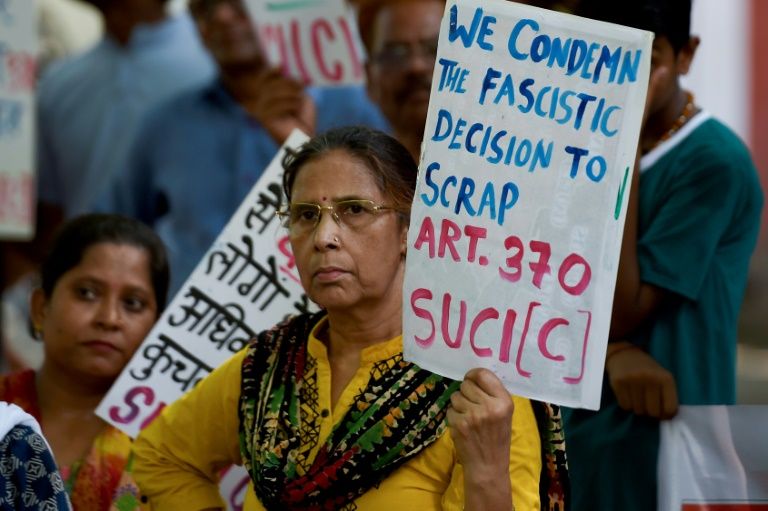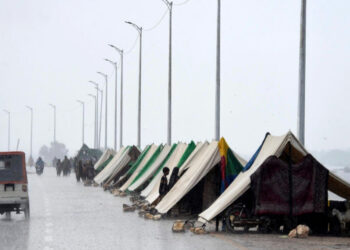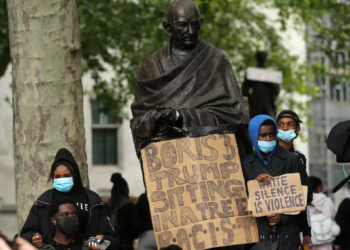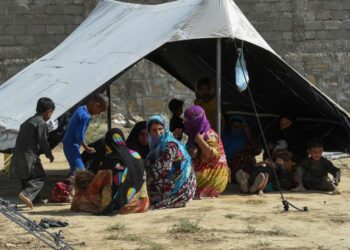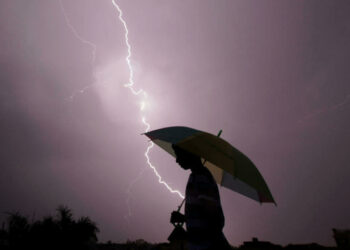Kashmir is staring at a monumental geopolitical uncertainty. Last week, India, which administers two-thirds of the region, unilaterally tore apart historic agreements and bifurcated the territory, leaving Kashmiris shocked and outraged.
In fact, most Kashmiris have not even been given a chance to know yet what has befallen them as the entire region is currently under military siege and total information blockade. Even five days after the Indian parliament decided to revise Article 370 and revoke Article 35A, the two key constitutional provisions that formed the historical-legal link between Kashmir and India, close to 10 million people of Kashmir remain totally cut off from the world.
India’s actions, under the stewardship of its Hindu-rightwing BJP government, have brought South Asia squarely back to the traumatic events of 1947, when a bloody partition created India and Pakistan and handed Kashmiris the misfortune of being divided and fought over by these two states.
Kashmiris would perhaps have celebrated if the revocation of Article 370 had been part of the process that led to the independence of their homeland, but that is not what has transpired. In fact, Kashmiris will see India’s moves as a direct assault on their existence as a people and, as many Kashmiris have long feared, the beginnings of a settler-colonial project.
These fears aren’t unfounded.
Creation of Kashmir
In 1947, when the British left the subcontinent, the Princely State of Jammu and Kashmir, as it was known, became independent. It had an unpopular Hindu monarchy ruling over a mostly Muslim population. Forced to decide between a Muslim-majority Pakistan and a Hindu-majority India, the Hindu ruler chose India without seeking the consent of his subjects. Nevertheless, Kashmir’s accession to India was limited to matters of defense, external affairs, and communication. Soon war over the region broke out between India and Pakistan, and the U.N. Security Council called for a ceasefire and a referendum in Jammu and Kashmir to determine its final status.
At that time and even now, most Kashmiris would have preferred to stay independent, but a small class of Kashmiri politicians endorsed the Hindu ruler’s decision after seeking guarantees from Indian leaders that Kashmir would have autonomy within the Indian Union and India would preserve the demographic character of the state.
Today the people of Jammu & Kashmir who reposed their faith in institutions of India like parliament & Supreme Court feel defeated & betrayed. By dismembering the state & fraudulently taking away what is rightfully & legally ours, they have further complicated the Kashmir dispute
— Mehbooba Mufti (@MehboobaMufti) August 5, 2019
Article 370 enshrined Kashmir’s autonomy, allowing the state to have its own constitution, flag, prime minister, and president. Indian laws could not be applied in Kashmir without the approval of Kashmir’s elected State Assembly. Article 35A enshrined the promise of not allowing Indians to settle in the region permanently.
The only way these articles could be amended – if the procedure had been followed – was by seeking a majority approval of the Jammu and Kashmir State Assembly. Again, that did not happen. The State Assembly was arbitrarily dissolved last November, and an Indian governor effectively controls the entire administration.
Kashmir’s Autonomy
For the last 70 years, the Indian government has found one way or the other to turn Kashmir’s autonomy into an empty shell. Kashmir was never really protected from the Indian state’s depredations. It has been the most-directly intervened in states of India. Its elections have often been systematically rigged, and its governments have been whimsically removed. It has had the longest spells of direct-rule from New Delhi.
And the Indian military in the region has enjoyed total immunity from prosecution for human rights abuses; a privilege Indian forces have used to the hilt. Even then, Article 370 had come to symbolize a distinct identity for Kashmiris, a hook to their long continuous history as a people, and a hope for a future of independence and self-government. The unilateral revision of Article 370 effectively dissolves any legal basis of Kashmir’s accession to India and turns Kashmir into a forcibly annexed land without the consent of its population.

The dissolution of Article 35A represents an even graver danger. The article was enacted as a continuation of a pre-1947 state law in Kashmir that granted Kashmir’s permanent residents citizenship rights, including buying land and applying for government jobs. After 1947, only the State Assembly could determine who the permanent residents of Kashmir were.
Demographic ‘Solution’
Hindu nationalists in India, however, have long campaigned to have the law removed so that the path to permanently settle Indians in Kashmir could be cleared. The Hindu-right in India, which include the BJP and its parent paramilitary organization RSS, has openly stated that Kashmir’s Muslim majority represents a “problem” and has proposed that opening up Kashmir to Hindu settlers from India would permanently put an end to the Kashmiri demands for independence.
Hindu-right’s drastic demographic “solution,” inspired in equal measure from their admiration of Nazi-era Germany and Israeli policies in Occupied Palestine, gained popularity in India in the 1990s when India’s government increased military repression in Kashmir and Kashmiris rose to demand freedom from India.
Since 1990, Kashmiris have lived under an unremitting military occupation. More than 80,000 Kashmiris have been killed, mostly at the hands of Indian forces, while thousands remain in jail. A large percentage of the population is maimed or suffers from mental ailments directly attributable to military repression.
Kashmir’s Muslim Majority
When India’s Prime Minister Narendra Modi, a lifelong member of the RSS, came to power in 2014, the Hindu-right saw it as their opportunity to put their plans for Kashmir into practice. On prime-time TV news shows, extremist Indian nationalists stoked a moral frenzy around Articles 370 and 35A. These laws, they claimed, unfairly gave Kashmir a “special status.” Within India’s constitution, there are several other regions which have had similar protections, but those protections have not been touched.

It was clear that Kashmir’s position was being targeted because of its Muslim majority population. BJP typically blamed opposition parties for preventing Modi from dissolving Kashmir’s autonomy. Kashmir should be like just any other state, the Hindu-right demanded.
However, the decision to revoke Article 370 and 35A came with an additional move that bifurcated the state and demoted it into two “Union Territories,” a status lower than normal Indian states. Union territories are directly ruled from Delhi, which would allow India crucial powers over policing and land use in Kashmir.
No Other Option
For close to two centuries, three principle regions have constituted the state: Kashmir, Jammu, and Ladakh. This arrangement has had internal frictions, but it allowed a degree of ethnoreligious pluralism in the state. With the bifurcation, this fragile balance has been drastically disturbed. Now the sparsely-populated Ladakh, where Buddhists have a slender majority over Muslims, will be one union territory. Jammu and Kashmir will be another union territory. The people in these regions will have minimal to no say in how they should be governed.
In my decade of research on Kashmir’s political history and society, I have never come across a single voice in the region that supported the removal of these laws. Not even among the few who would have preferred to stay as part of the Indian state. An overwhelming majority of Kashmiris believes that staying under Indian rule would be to live under a perpetual threat of ethnic cleansing. That is why most would want to become independent.
Kashmir’s 70-year story under India has been one of political disempowerment, denial of democratic rights, and outright brutalization. Now Kashmiris stare at the very real possibility of dispossession and disinheritance. As more Kashmiris are beginning to understand what has taken place, their anger is growing. India has pushed them into yet another maelstrom of an unending resistance. They are being left with no other option.
Disclaimer: The views and opinions expressed here are those of the author and do not necessarily reflect the editorial position of The Globe Post.

